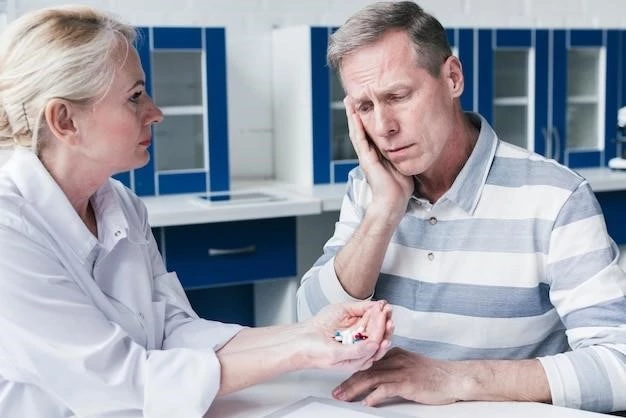Understanding Gonadal Dysgenesis
Gonadal dysgenesis is a condition that affects sexual development and fertility due to abnormalities in gonadal development. Understanding this condition is crucial for early detection and appropriate management.

Introduction to Gonadal Dysgenesis
Gonadal dysgenesis, also known as gonadal agenesis, is a condition that impairs the development of gonads, the organs responsible for producing reproductive cells and sex hormones. This leads to abnormalities in sexual development and potential infertility. The condition primarily affects individuals with atypical sex chromosome patterns, resulting in variations in physical characteristics and reproductive challenges.
Individuals with gonadal dysgenesis may have a mix of male and female physical traits or ambiguous genitalia. This discrepancy between genetic and physical sex characteristics can cause emotional distress and psychological challenges. Understanding the causes, symptoms, and treatment options for gonadal dysgenesis is essential for affected individuals and their healthcare providers.
Genetic testing plays a crucial role in diagnosing gonadal dysgenesis by identifying chromosomal abnormalities that contribute to the condition. Early detection allows for timely interventions to manage the impact of gonadal dysgenesis on sexual development and overall health. Additionally, hormone replacement therapy may be recommended to help regulate hormone levels and support physical development.
Psychological support is essential for individuals with gonadal dysgenesis, as coping with the emotional implications of the condition is an integral part of overall health and well-being. Open communication with healthcare providers and access to support groups can help individuals navigate the challenges associated with gonadal dysgenesis.
Management of gonadal dysgenesis may involve surgical interventions such as gonadectomy, the removal of dysfunctional gonads. This procedure is performed to reduce the risk of complications such as tumor development in abnormal gonadal tissue. By addressing the underlying causes of gonadal dysgenesis and providing appropriate interventions, individuals affected by this condition can lead fulfilling lives with the necessary support and medical care.
Types of Gonadal Dysgenesis
Gonadal dysgenesis encompasses various genetic conditions that affect gonadal development and sexual differentiation. Some of the primary types of gonadal dysgenesis include Swyer syndrome, Turner syndrome, XX male syndrome, and Klinefelter syndrome.
- Swyer Syndrome⁚ Also known as 46,XY gonadal agenesis, Swyer syndrome is characterized by individuals with a 46,XY karyotype (typically male) who develop as females due to gonadal dysgenesis. These individuals have female external genitalia but nonfunctional streak gonads.
- Turner Syndrome⁚ Turner syndrome occurs in individuals with a complete or partial loss of one X chromosome (45,X), leading to underdeveloped ovaries and primary amenorrhea. This condition affects female sexual development and may result in infertility.
- XX Male Syndrome⁚ Also known as de la Chapelle syndrome, XX male syndrome involves individuals with a 46,XX karyotype (typical female) who exhibit male characteristics due to the translocation of the SRY gene to an X chromosome, leading to testicular development.
- Klinefelter Syndrome⁚ Klinefelter syndrome is characterized by the presence of at least one extra X chromosome in males (47,XXY). This condition can result in hypogonadism, gynecomastia, and infertility due to abnormal testicular development.
Each type of gonadal dysgenesis presents unique challenges in sexual development, fertility, and overall health. Genetic testing is essential for accurately diagnosing the specific type of gonadal dysgenesis and guiding appropriate treatment options to address the individual’s needs and optimize their quality of life.
Causes of Gonadal Dysgenesis
Gonadal dysgenesis can be caused by a variety of genetic abnormalities that impact gonadal development and sex differentiation. The primary causes of gonadal dysgenesis include chromosomal abnormalities, gene mutations, and environmental factors.
Chromosomal abnormalities, such as missing or extra sex chromosomes, play a significant role in the development of gonadal dysgenesis. Conditions like Turner syndrome (45,X), Klinefelter syndrome (47,XXY), and Swyer syndrome (46,XY) are examples of chromosomal disorders that can lead to gonadal agenesis and reproductive challenges.
Gene mutations can also contribute to gonadal dysgenesis by disrupting the normal processes involved in gonadal development. Mutations in genes responsible for sex determination and gonad formation can result in abnormal gonadal structure and function, affecting hormonal balance and fertility.
Environmental factors, such as exposure to endocrine-disrupting chemicals during fetal development, may influence gonadal development and contribute to gonadal dysgenesis. Chemicals like bisphenol A (BPA) and phthalates have been linked to reproductive system abnormalities, potentially affecting gonadal development in susceptible individuals.
Understanding the complex interplay between genetic and environmental factors is essential for identifying the underlying causes of gonadal dysgenesis. Genetic testing can help pinpoint specific genetic abnormalities contributing to the condition, guiding personalized treatment approaches and reproductive counseling for individuals affected by gonadal dysgenesis.
Symptoms and Diagnosis
The symptoms of gonadal dysgenesis vary depending on the underlying genetic cause and the individual’s unique presentation. Common symptoms may include atypical genitalia, delayed or absent puberty, infertility, and hormonal imbalances. Individuals with gonadal dysgenesis may also experience psychological challenges related to their sexual development.
Diagnosing gonadal dysgenesis typically involves a combination of physical examinations, medical history reviews, hormone level assessments, and genetic testing. Physical examinations may reveal ambiguous genitalia or underdeveloped secondary sexual characteristics, raising suspicion of underlying gonadal abnormalities.
Hormone level assessments help identify imbalances in sex hormones such as testosterone and estrogen, which can provide additional insights into gonadal function. Genetic testing, including karyotyping and molecular analysis, is crucial for identifying chromosomal abnormalities associated with gonadal dysgenesis, such as Turner syndrome or Klinefelter syndrome.
In some cases, imaging studies like ultrasound or magnetic resonance imaging (MRI) may be recommended to evaluate gonadal structures and detect any anomalies. These diagnostic tools can aid in confirming the presence of streak gonads, undescended testes, or other structural abnormalities that characterize gonadal dysgenesis.
Early diagnosis of gonadal dysgenesis is essential for implementing timely interventions and personalized treatment plans to address the physical, hormonal, and psychological aspects of the condition. By recognizing the symptoms and conducting comprehensive diagnostic assessments, healthcare providers can offer appropriate support and management strategies for individuals affected by gonadal dysgenesis.
Treatment Options
The treatment of gonadal dysgenesis aims to address the specific symptoms and reproductive challenges associated with the condition. Depending on the type and severity of gonadal dysgenesis, treatment options may include hormone replacement therapy, surgical interventions, and reproductive assistance.
- Hormone Replacement Therapy (HRT)⁚ Hormone replacement therapy is commonly prescribed to individuals with gonadal dysgenesis to supplement deficient sex hormones and promote secondary sexual development. Estrogen therapy may be recommended for individuals with Turner syndrome to support puberty and prevent osteoporosis.
- Surgical Interventions⁚ In cases where gonadal dysgenesis poses a risk of complications such as tumor development, gonadectomy (surgical removal of gonads) may be considered. This procedure aims to reduce the potential health risks associated with dysfunctional gonadal tissue.
- Reproductive Assistance⁚ Individuals with gonadal dysgenesis who desire fertility options may explore assisted reproductive technologies such as in vitro fertilization (IVF) using donor gametes. Fertility preservation methods like sperm or egg freezing before gonadectomy may also be considered.
Psychological support is an integral part of the treatment process for individuals with gonadal dysgenesis, as they navigate the emotional impact of the condition on their self-image, relationships, and future reproductive goals. Counseling services and support groups can provide valuable resources for coping with the challenges of gonadal dysgenesis.
Personalized treatment plans, tailored to each individual’s unique needs and goals, can help optimize outcomes and improve quality of life for individuals with gonadal dysgenesis; Close collaboration between endocrinologists, genetic counselors, reproductive specialists, and mental health professionals is essential in providing comprehensive care and support for individuals affected by this complex condition.
Management and Support
Managing gonadal dysgenesis involves a multidisciplinary approach focused on addressing the physical, emotional, and reproductive aspects of the condition. Comprehensive management strategies and ongoing support are crucial for individuals living with gonadal dysgenesis.
Regular follow-up care with healthcare providers, including endocrinologists and reproductive specialists, is essential to monitor hormone levels, assess physical development, and address any emerging concerns. These routine evaluations help track progress, adjust treatment plans as needed, and detect potential complications early.
Genetic counseling plays a vital role in educating individuals with gonadal dysgenesis and their families about the genetic implications of the condition, reproductive options, and the risk of passing on chromosomal abnormalities to future generations. Understanding the genetic basis of gonadal dysgenesis empowers individuals to make informed decisions about their health and family planning.
Supportive services, such as mental health counseling, peer support groups, and educational resources, can offer emotional support and practical guidance for individuals coping with the challenges of gonadal dysgenesis. Building a strong support network can help individuals navigate the complexities of the condition and enhance their overall well-being.
For individuals undergoing gonadectomy as part of their treatment plan, post-operative care and monitoring are essential to ensure optimal recovery and hormonal balance. Healthcare providers work closely with patients to manage any post-surgical symptoms, adjust hormone replacement therapy, and address concerns related to fertility preservation or reproductive options.
Empowering individuals with gonadal dysgenesis through education, access to resources, and specialized care promotes self-advocacy and improves health outcomes. By fostering a collaborative and supportive environment, healthcare professionals can enhance the quality of life for individuals with gonadal dysgenesis and help them navigate the complexities of the condition with confidence and resilience.
